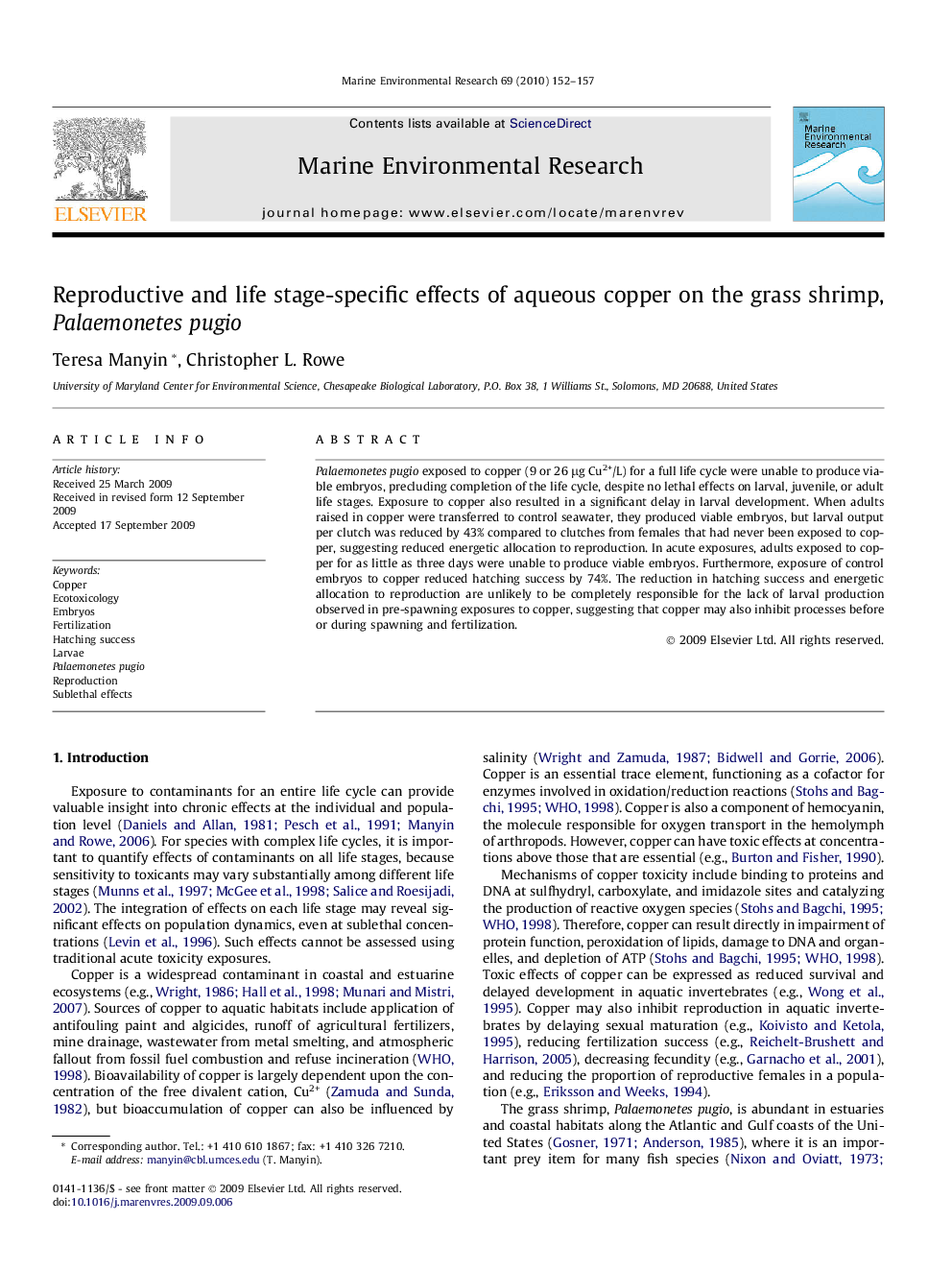| Article ID | Journal | Published Year | Pages | File Type |
|---|---|---|---|---|
| 4551252 | Marine Environmental Research | 2010 | 6 Pages |
Palaemonetes pugio exposed to copper (9 or 26 μg Cu2+/L) for a full life cycle were unable to produce viable embryos, precluding completion of the life cycle, despite no lethal effects on larval, juvenile, or adult life stages. Exposure to copper also resulted in a significant delay in larval development. When adults raised in copper were transferred to control seawater, they produced viable embryos, but larval output per clutch was reduced by 43% compared to clutches from females that had never been exposed to copper, suggesting reduced energetic allocation to reproduction. In acute exposures, adults exposed to copper for as little as three days were unable to produce viable embryos. Furthermore, exposure of control embryos to copper reduced hatching success by 74%. The reduction in hatching success and energetic allocation to reproduction are unlikely to be completely responsible for the lack of larval production observed in pre-spawning exposures to copper, suggesting that copper may also inhibit processes before or during spawning and fertilization.
